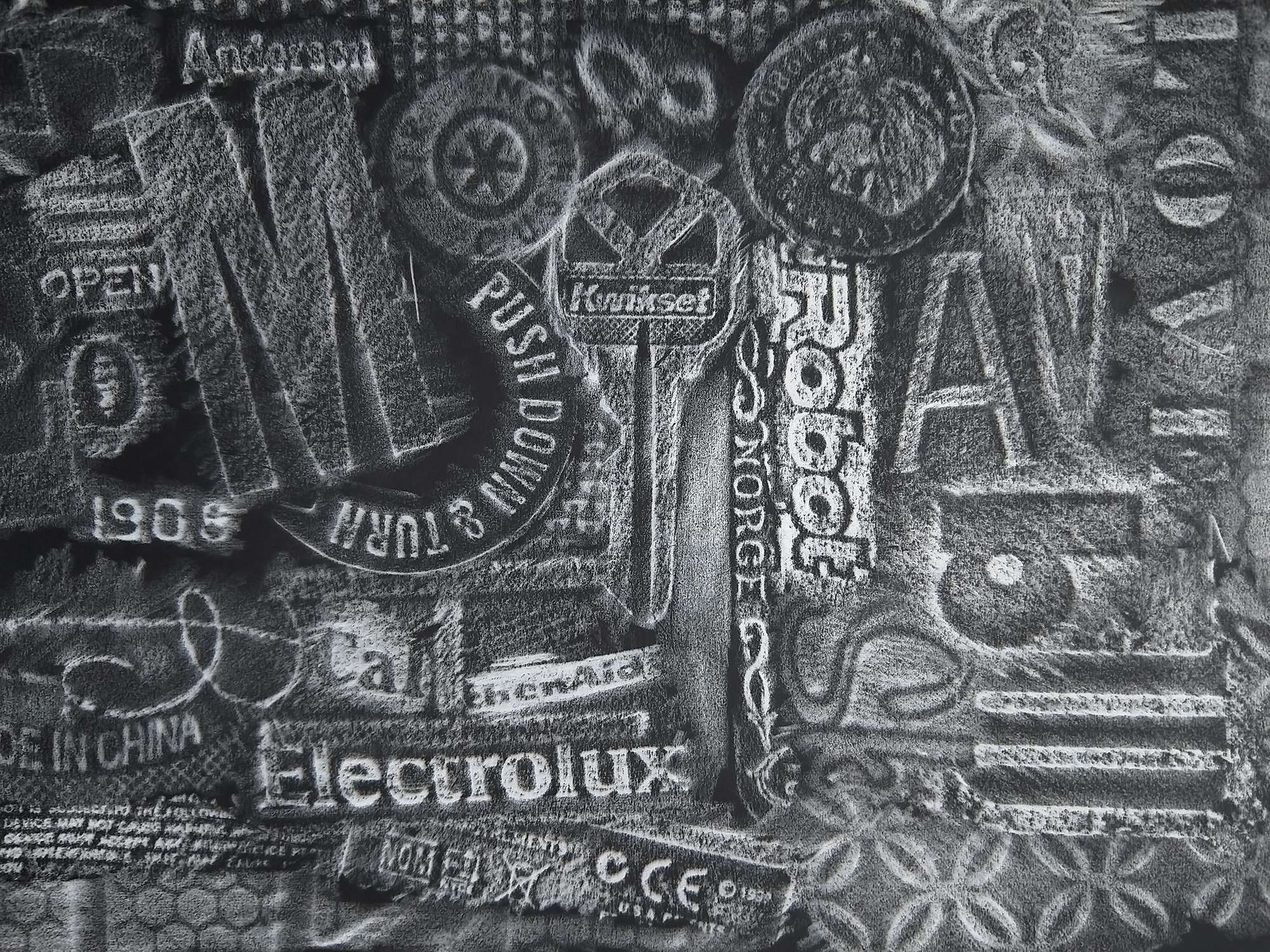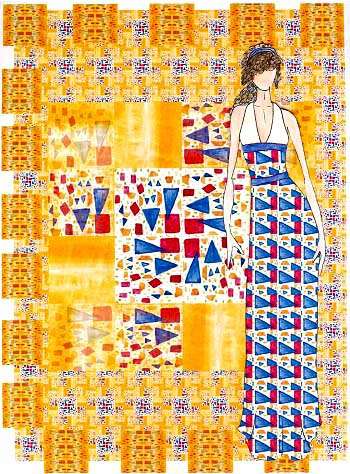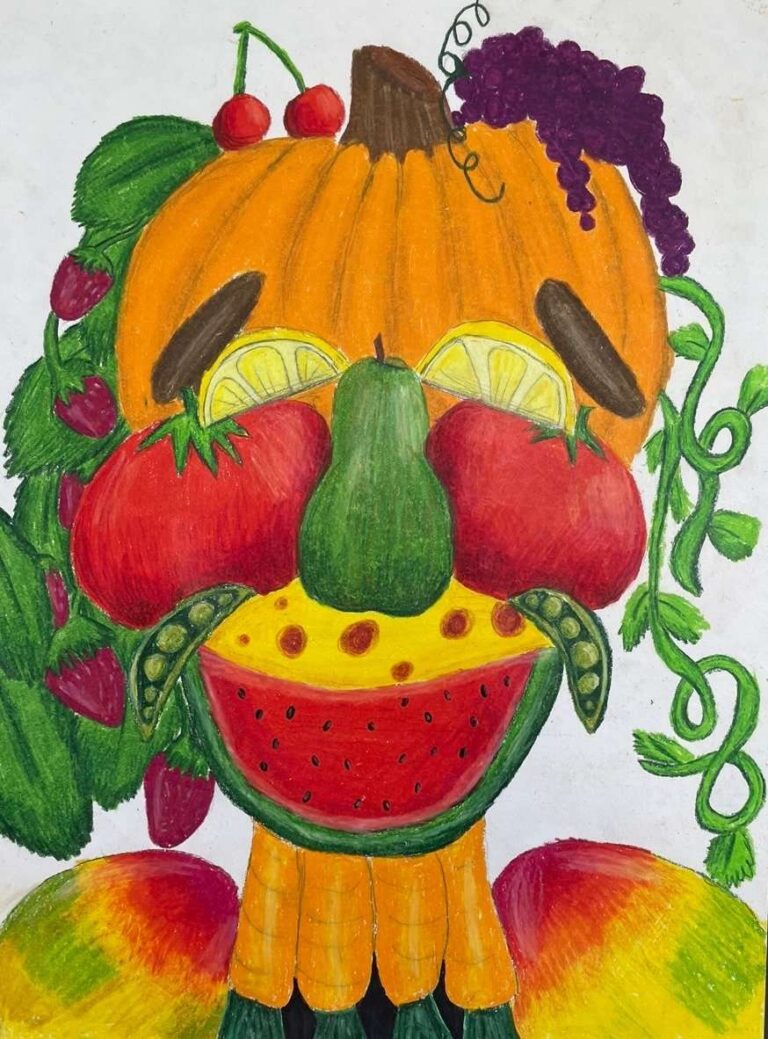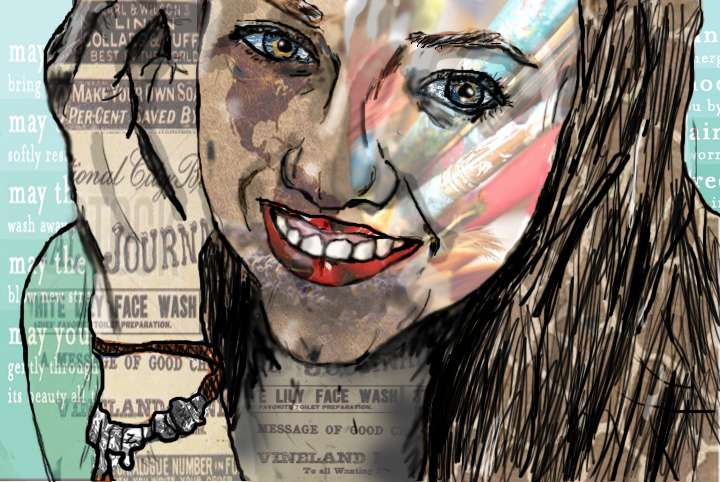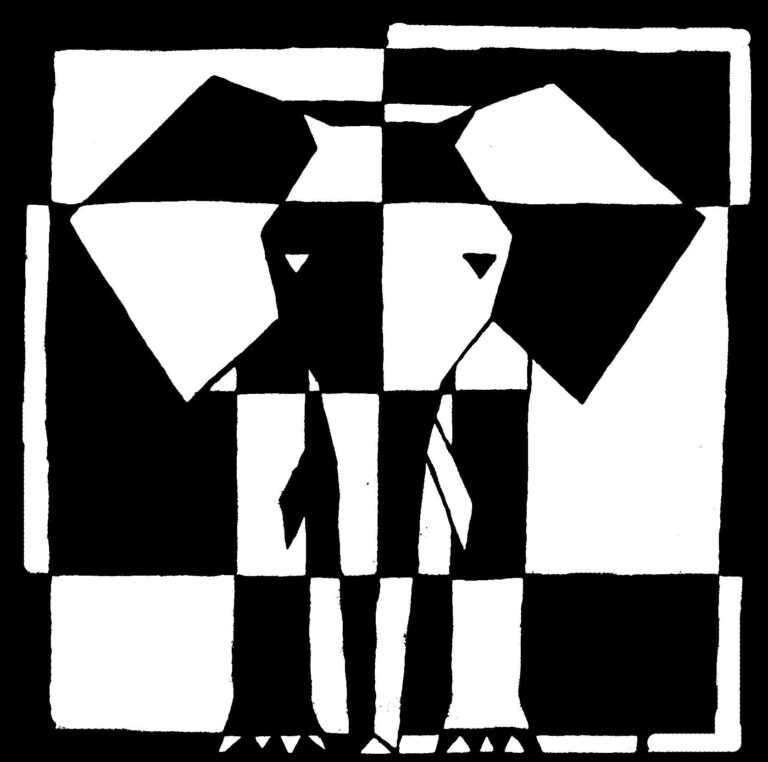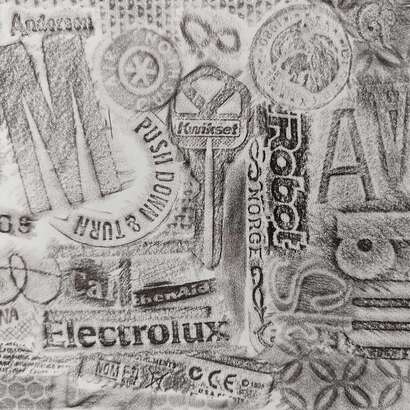
Grade Level
7-8, 9-10, 11-12Duration
2 forty five minute periods (size dependent)
Materials
Typing paper and one of the following: dark color pencil, crayon, graphite stuck or pencil
Media
Pencil, Wax crayons, Color pencils
Lesson Objectives
For the student…
To find a variety of type and texture
To create a collage of type and text through thoughtful arrangment of quality rubbings
To show visual use of the principles of design, in particular variety and contrast.
Introductory Activity
Introduction of this can vary. For a graphic design class you might introduce students to the anatomy of type and talk about the wide variety of typefaces and uses of.
For a printmaking class you might delve into the history of rubbings (frottage and surrealism, use in forensics, brass rubbings, gravestone rubbings, and more contemporary “street printing”).
For more general art classes introductory activities could reflect any of the above AND discussion of how to create an exciting and strong composition using the elements of art and principles of design.
A fun extension of this assignment could be to scan or photograph the image and create an inverted version or to otherwise alter and push the image.
Lesson Process
This lesson was originally designed for teachers to use as a home project students could do through the COVID-19 crisis. This is a low supply project that could be done in most home environments.
I would recommend students walk around their home (and/or community) to locate type that is raised or embossed. In my home I found type for rubbings on shoes, tools, kitchen appliances, book covers, etc.
Practice doing some rubbings.
Thin paper, like typing paper, works well for this assignment. The size you work may help dictate the size of your final work (large impressions from manhole cover or graveyards might require larger sizes, the example shown was all done inside a house and was just 6.5 x 4 inches.
Students create their typography and texture rubbings, filling all available space! An extension of this project would be to use Photoshop (or if you don’t have Photoshop try Pixlr, a similar on line program) to invert the image after scanning or photographing. See the example second example.
Vocabulary
value, contrast, texture, serif, san serif, variety, font, Rubbing, logosResources
Rubbing – Art Vocab Definition – YouTube
Tombstones, Manhole Covers and The Ancient Art of Rubbing – The New York Times
Chicago Street Iron – Storm Print City
Street printing – Google Search
Author & Website/Blog
Supporting Images

